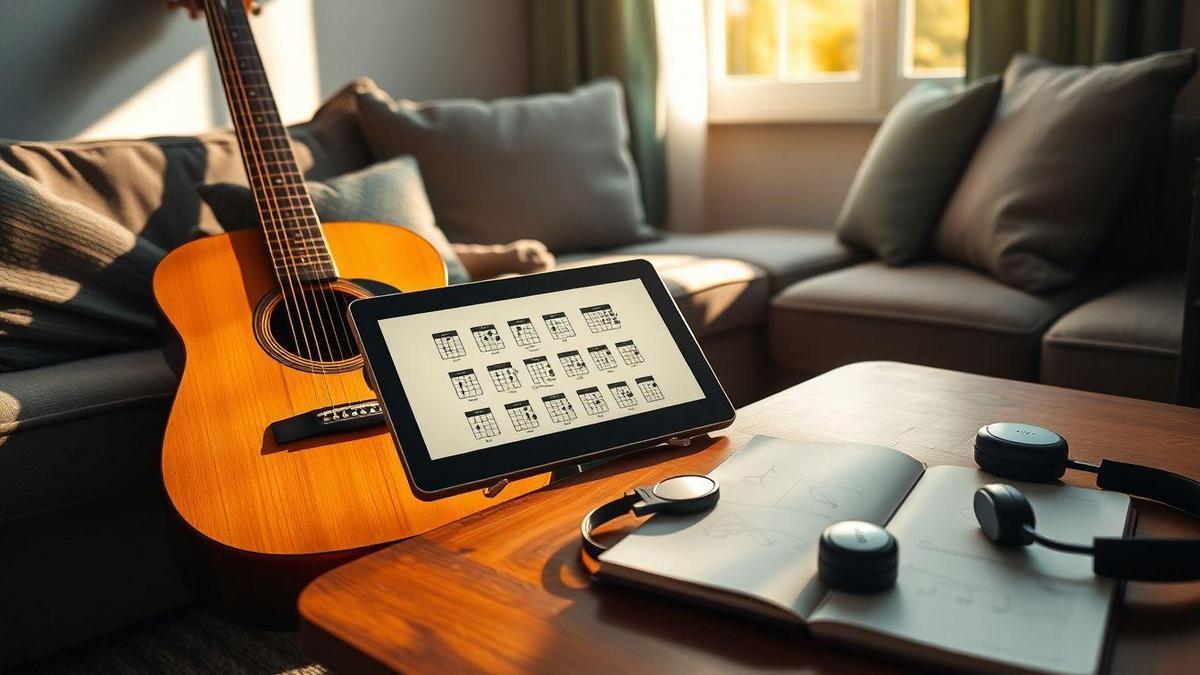How I Find and Use Música de fundo sem direitos autorais
Key takeaway
- I download free, royalty-free background music (Música de fundo sem direitos autorais) for projects.
- I read and save the license before using a track.
- I credit the creator when the license requires it.
- I keep receipts and screenshots as proof of the license.
- I choose MP3 for previews and WAV/FLAC for final mixes.
How I quickly find Música de fundo sem direitos autorais
When I need a background track fast, I search with mood royalty free and add style or language (for example, ambient piano royalty free or bossa nova royalty free). That small tweak saves time and avoids dead ends. I prioritize short download times, clear license statements, and music that matches the intended atmosphere.
Where I search for músicas sem direitos autorais and safe sites
I start with established libraries, then check niche marketplaces for unique sounds. I trust sites with:
- Clear license text and visible download buttons
- User ratings and creator profiles
- No forced software or suspicious pop-ups
If a site hides the license or asks for odd permissions, I walk away. When possible I verify the track’s original source to avoid re-uploads of copyrighted material.
File types and sizes I choose
- MP3: great for quick previews (256 kbps or higher).
- WAV/FLAC: for final edits — clean and editable (16-bit/44.1 kHz minimum).
- File size: under ~10 MB for short clips, under ~50 MB for longer pieces. Balance quality and download time depending on final use.
Quick checklist before I click download
- Read the license summary and confirm allowed uses (commercial use? attribution required? modification allowed?)
- Confirm file type and bitrate
- Preview the full track
- Check comments/ratings for licensing surprises
- Save a screenshot of the license and the download receipt
How I read licenses to stay legal with Música de fundo sem direitos autorais
Open the license and find the name and version first. Then check:
- Who owns the music (artist vs. public domain)
- Allowed uses, attribution rules, commercial rights, and modification permissions
- Territory and expiration dates
If anything is unclear, I save the page and ask the creator: Can I use this in a monetized video worldwide? A clear yes removes doubt.
Public domain vs Creative Commons vs royalty-free
- Public domain: no rights reserved; you can use and modify freely (verify recordings).
- Creative Commons:
- CC0 = like public domain
- CC BY = free with attribution
- CC BY-NC = no commercial use
- CC BY-SA = share alike
- Royalty-free: usually pay once and reuse, but read the vendor terms—some restrict broadcast, monetization, or require an extra sync license.
Treat royalty free as a promise with footnotes; always read those footnotes.
When to give credit and when músicas sem royalties are free to use
- CC BY: credit required. Example: Title — Artist — License link.
- CC0 or public domain: credit not required, but it’s good practice.
- Paid royalty-free: check purchase terms; some sellers still restrict monetization or require attribution.
- Covers of copyrighted songs almost always require sync permission.
When unsure, contact the creator and get written permission.
License red flags I avoid
- Vague free to use claims without a license
- Personal use only labels for public or monetized projects
- No visible license file or link
- Hidden fees or add-on licenses for common uses (YouTube, broadcast)
- Conflicting claims between artist and platform
- No contact info for the creator
- Licenses that forbid modifications when I need to edit
- Extremely low prices paired with vague rights
How I add música de fundo sem direitos autorais to YouTube and avoid claims
- Choose tracks that explicitly allow monetization and commercial use.
- Save the license (screenshot/PDF) before uploading.
- Upload as unlisted or private first to check Content ID results.
- If a claim appears, check claimant and license; file a dispute if you have proof.
- If unresolved, swap track or mute the claimed segment.
Where I start for músicas sem copyright for YouTube
Trusted places I use first:
- YouTube Audio Library
- Reputable royalty-free stores with clear licenses
- Creators offering CC0 or CC-BY with clear text
Always verify the original source—forum uploads can be re-uploads of copyrighted songs.
Volume, timing, and Content ID tips for música de fundo gratuita para vídeos
- Keep music lower than voice (3–8 dB below) and duck during key lines.
- Fade the music in/out around cuts to avoid sharp hooks that trigger Content ID.
- Avoid famous riffs or melodies that resemble chart hits.
- Start music after a voice intro or end it before credits when possible.
If a claim blocks monetization, attach license proof to dispute or replace the track.
Simple attribution lines for video descriptions
- Track: “Sunlit Walk” — Artist: Royalty Music Collective. Source: RoyaltyMusic.com. License: CC-BY 4.0 (link).
- Track: “Quiet Strings” — Artist: Ana Silva. Free for commercial use. License proof saved: receipt #12345.
- Music provided by Royalty Music — used under commercial license. License file: [link to my saved license].
How I edit música instrumental sem direitos autorais for a smooth background
Goal: a bed that supports the voice, never competes.
- Listen with headphones and mark loud/empty spots.
- Trim ends, remove ticks/clicks, fix levels.
- Use a fade curve, high-pass filter, and light compression.
- Make small, natural adjustments to preserve the track’s character.
Because I often use Música de fundo sem direitos autorais, I can loop and fade freely without legal worry.
Looping, fading, and trimming tricks
- Loop at zero-crossings to avoid clicks; add tiny crossfades if needed.
- Use slow fades at the start and fade out before the voice ends.
- Trim silent tails and repeating intro bars that clash with speech.
- Nudge drum hits slightly if they collide with a key line.
Matching tempo and mood so the music supports the voiceover
- Listen to the voice first: calm, urgent, playful?
- Choose a tempo and tone that sit under the voice.
- Slightly slow or speed a track (a few percent) to match pacing without wobble.
- If the narrator sings, shift key up/down by up to a semitone for pleasant harmony.
- Use stems or mood variants when available to fine-tune emotional tone.
Step-by-step edits for a clean mix
- Import the música instrumental sem direitos autorais and align with the voice.
- Trim leading/trailing silence and conflicting bars.
- Add short crossfades (10–50 ms) at edit points.
- High-pass around 80–120 Hz to clear rumble.
- Gentle compression (2:1 ratio) with slow attack.
- Automate volume to ride the music under the vocal.
- Fix tempo/pitch if needed.
- Test on headphones, laptop, and phone before export.
How I pick músicas royalty free para fundo de vídeos by mood and use
Ask three questions:
- What feeling do I want?
- Where will viewers hear this?
- How loud should it sit under voice?
Then listen for intro hooks, vocal space, and loopability. Test promising tracks under actual footage.
Genres I choose for vlogs, ads, and documentaries
- Vlogs: acoustic guitar, lo-fi beats, light indie pop.
- Ads: bright pop, upbeat electronic, short orchestral hits — hooks matter.
- Documentaries: ambient pads, soft piano, sparse strings — space to breathe. Pick textures that support the scene without competing with narration.
Balancing variety and brand consistency
Treat your brand like a playlist: pick a core set of instruments and vary tempo and keys. Keep three backups per mood and document usage notes (e.g., use under VO, <10% volume, 4–8s intro) to speed editing.
My quick mood-to-genre guide
- Happy/light: ukulele, indie pop — travel, lifestyle.
- Calm/reflective: soft piano, ambient pads — interviews, montages.
- Energetic/playful: funk, upbeat electronic — product reveals, fast cuts.
- Tense/dramatic: low strings, dark synths — true-crime, suspense.
- Warm/cozy: lo-fi, mellow jazz — evening vlogs, coffee scenes.
Where I get trusted trilhas sonoras sem direitos autorais grátis
I look for Música de fundo sem direitos autorais that sounds good and has clear rules. Trusted free resources I use:
- YouTube Audio Library
- Free Music Archive
- Incompetech (Kevin MacLeod)
- Musopen (public-domain classical)
- ccMixter
- Bensound
- Archive.org
Always save the license text and download receipt.
Free vs paid options for banco de músicas royalty free download
- Free: good for hobby projects; sometimes limited variety and potential mislabeling; may require attribution.
- Paid: clearer licenses, higher-quality stems, and less risk—recommended for client work or monetized projects. Balance budget, time, and risk: free for practice, paid for commercial use.
How I verify source credibility and avoid misleading músicas sem copyright labels
- Read the license page thoroughly.
- Check the creator’s profile and external links.
- Search the track title online for duplicates or conflicting claims.
- Save screenshots and receipts as a paper trail.
- Contact the artist or platform if unsure.
Small verification steps prevent big copyright headaches.
My go-to free resources for safe downloads
- YouTube Audio Library
- Free Music Archive
- Incompetech
- Musopen
- ccMixter
- Bensound
- Archive.org
Record where you downloaded each track and the exact license text.
FAQ — Música de fundo sem direitos autorais (short answers)
Q: Is royalty-free always free to use in monetized videos?
A: Not always. Check the license; some royalty-free tracks restrict monetization or require extra sync licenses.
Q: Do I always need to credit CC-BY tracks?
A: Yes. Use a short format: Title — Artist — License link.
Q: Can I edit música de fundo sem direitos autorais?
A: Only if the license permits modification. Public domain and CC0 allow edits; some licenses do not.
Q: What if Content ID flags a free track?
A: Upload privately to check, then dispute with license proof or replace the track.
Conclusion
Safety first, creativity second. Hunt for Música de fundo sem direitos autorais on trusted sites, read the license like a map, save proof, and credit when required. Use MP3 for previews and WAV/FLAC for final mixes. Test in a private upload, watch for Content ID, and mix music low so the voice leads. Avoid vague free to use claims and always verify the original source.
For more tips, tools, and sources, visit https://sambizangamusik.com and keep your projects sounding clean and claim-free.













